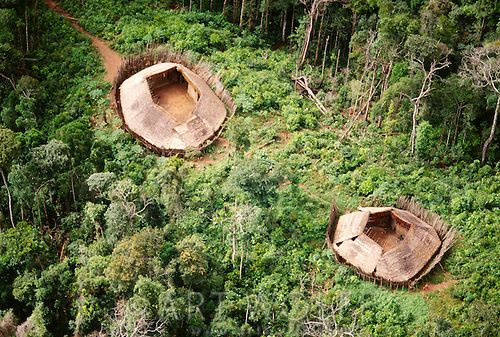The Yanomami live in large circular communal houses called ‘yano’ or ‘shabono’, which can accommodate up to 400 people.

The central zone is used for community activities such as rituals, parties and games. Each family has their own bonfire where they prepare and cook food during the day. At night they hang the hammocks near the fire.
The Yanomami are an indigenous tribe (also called Yanamamo, Yanomam, and Sanuma) made up of four subdivisions of Indians which live in the tropical rain forest of Southern Venezuela and Northern Brazil. Each subdivision has its own language.
The first report of the Yanomami is from 1654, when a Spanish expedition under Apolinar Diaz de la Fuente visited some Ye’kuana people living on the Padamo River.
#archaeohistories






